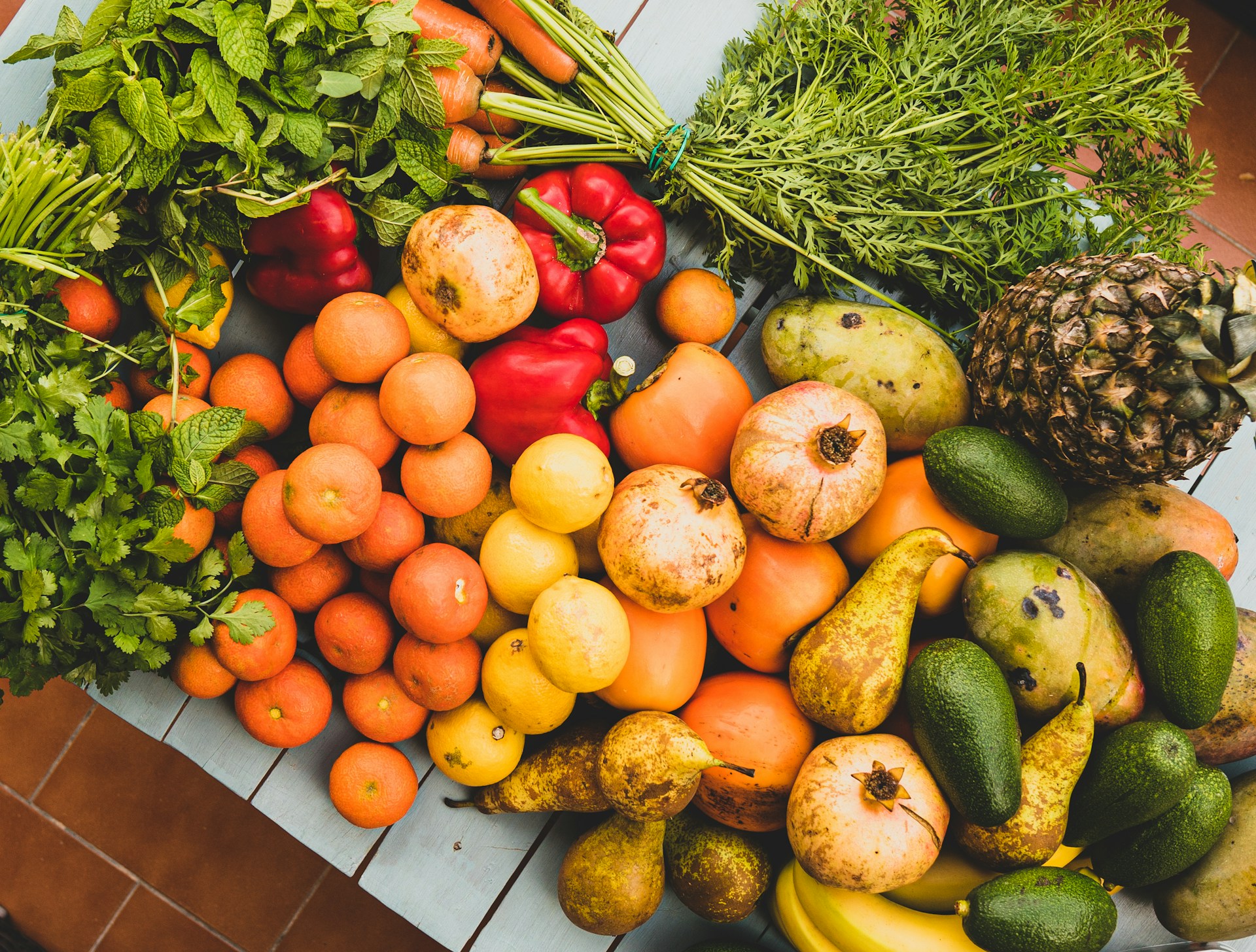As the global produce trade continues to grow, so does the complexity of its logistics.
In all corners of the world, fruits and vegetables change hands, navigating complex shipping routes.
Each exchange is shaped by a variety of factors, from weather patterns to legal restrictions.
Suffice to say, shipping routes are never settled; they are rather dependent on a constellation of variables that shift with the seasons.
Optimal planning and execution are therefore critical to ensure a timely and safe delivery.
This article will be an in-depth exploration of the crucial factors to consider when planning these dynamic, seasonally influenced routes.
Contents
Key Considerations For Seasonal Shipping Routes In Produce Trade
1. Seasonal availability of specific produce
The seasonal availability of specific produce significantly influences the dynamics of produce trade and shipping routes.
For example, summer fruits like berries and peaches can only be harvested during warm months, leading to a surge in their market accessibility during that season.
This occurrence can dramatically alter the demand for these products as well as the need for their transportation.
Producing regions and countries have to adjust their trading and shipping strategies according to the seasonal availability of these fruits, drastically affecting the flow of the produce trade.
Seasonal fruits and vegetables not only influence the local markets but also international trade.
Produce like oranges, bananas, and avocados are sought after globally, leading to a massive boom in their shipment during harvest seasons.
The key is understanding that the operational planning of the shipping routes is strongly bound to the harvest calendar of these fruits.
In the same vein, out-of-season fruits and vegetables also impact the shipping industry by creating an off-season demand that must be met by imports from regions where the harvest period differs.
The import and export dynamic can place additional pressure on trading relationships and transport networks as the availability of certain produce fluctuates throughout the year.
This form of trade is also significantly influenced by consumers’ preferences and their willingness to pay more for off-season fruits and vegetables.
Coupled with a robust and efficient cold chain logistics system, these off-season produce can be transported over long distances while maintaining their freshness.
However, it is essential to highlight that these shifts to meet the seasonal availability and consumer demand also translate into the operational costs for transport and logistics companies.
Therefore, investing in preserving technologies and transport solutions becomes a key strategy in this system to prevent product loss and ensure food safety.
Another major factor that plays a role in the seasonal shipping of produce is the effect of climate change on the growing seasons.
Changes in weather patterns have been causing unpredictable shifts in harvest periods, further complicating the landscape of produce trade.
These shifting trends mean that trade policies and transport routes must be continuously assessed and adapted to the seasonal availability and demands of the produce market.
2. Weather impact on transportation routes
As any produce trade professional will attest, weather significantly impacts transportation routes, presenting both obstacles and opportunities for trade.
The influence of weather on shipping routes does not simply end at stormy seas – it can dramatically alter the scheduled transportation of produce.
Rainy seasons may make previously passable roads impassable, effectively halting trade along that route.
In contrast, unusually dry periods can also obstruct shipments through river channels, where low water levels can prevent barges from transporting goods.
The ice and snow of harsh winters can disrupt road, rail, and air transport, delaying the delivery of perishable produce for days or even weeks.
Moreover, seasonal changes can also alter the potential viability of transportation routes.
For instance, some geographic areas only become accessible during certain seasons, opening new trade routes, albeit temporarily.
Understanding these subtle and often ephemeral changes in accessibility is crucial for optimizing shipping routes and ensuring the successful transportation of produce.
Due to the perishable nature of most produce, delays in delivery can result in significant losses and impact the integrity of the produce received by consumers.
Besides, quick shifts in weather patterns can cause unexpected transportation issues, putting shipments at risk.
Given this, it is crucial to access a reliable weather forecast and conduct detailed route planning before setting off.
Moreover, enterprises can benefit from investing in all-weather transportation to ensure the smooth flow of goods, regardless of weather conditions.
This can include off-road vehicles for overland transport, or specially designed ships and aircrafts that can safely navigate in extreme weather conditions.
Considering the significant impact of weather on transport routes, it is crucial for produce traders to pay close attention to weather forecasts and change their plans accordingly.
After all, the effectiveness and efficiency of produce transportation heavily rely on the ability to navigate the constantly changing environmental conditions.
3. Timing and Duration of Harvest Periods
Understanding the timing and duration of harvest periods is vital to the success of seasonal shipping routes in produce trade.
Globally, a wide range of fresh produces are cultivated and their harvest times vary, which in turn affects the shipping schedules.
Strawberries, for example, are usually harvested between late April and early June in many parts of the United States.
Consequently, this would imply that the shipping of strawberries would surge around this period.
Such seasonal timings demand flexibility in the shipping industry,, and knowing these timings allows shippers to prepare for the influx in demand.
The dynamics of harvest seasons eloquently demonstrates how the production end of the agriculture business influences the logistics end.
But it’s not just about recognizing the harvest times – shipping companies also need to be aware of the duration of these harvest periods.
Some agricultural goods have relatively short harvest durations, such as cherries which can have a harvest period as short as four weeks.
This short window of time means that shippers must be prepared to handle a large volume of goods in a short time span.
By contrast, other crops like corn, can have a lengthier harvest duration.
This could stretch for months, allowing for a more spread out shipping schedule.
The timing and duration of harvest periods are interlinked with other factors, making this a complex element to consider in seasonal shipping routes.
Unpredictable weather changes can affect harvest times and even disrupt the shipping process.
Additionally, fluctuations in consumer demand could impact the quantity of produce harvested and subsequently shipped.
Shippers need to stay proactively informed about these dynamics to drastically reduce any chances of interruptions and to ensure smooth operations throughout the season.
The collaboration between farmers, shippers and retailers is essential for sharing accurate information on the timing and duration of harvest periods.
4. Access to Cold Chain Logistics
The accessibility of cold chain logistics is a crucial element when discussing key considerations for seasonal shipping routes in produce trade.
Simply put, cold chain logistics refers to a temperature-controlled supply chain which is essential for the transportation of perishable items, such as fruits and vegetables.
Its main function is to maintain the integrity and quality of food products during transit by strictly managing the temperature of the cargo, ensuring that the products arrive at their destination in optimal condition.
It’s important to note that the availability and efficiency of these cold chain systems can greatly impact the seasonality and availability of certain produce along the supply chain.
The absence of a reliable and efficient cold chain system can lead to significant losses in quality, quantity, and ultimately revenue, due to the fast spoilage rate of fresh produce.
The effectiveness of cold chain logistics is highly dependent on the reliability and functionality of the various components involved, such as refrigerated transportation, warehousing, and handling equipment.
Poorly maintained or malfunctioning gear can disrupt the cold chain and compromise the quality of the produce, resulting in delayed shipments and potential revenue loss.
Moreover, appropriate cold chain logistics is not just about having the right equipment.
It also requires trained personnel who are skilled in the operation of these systems and understand the nuances of maintaining temperature integrity during the transportation process.
Additionally, external factors, such as weather conditions, can also have a significant impact on the performance of cold chain logistics.
For instance, very hot or cold weather can put additional strain on refrigerated transport systems, requiring constant monitoring and fast response times to prevent temperature fluctuations.
Therefore, access to reliable, efficient, and robust cold chain logistics is a critical consideration when planning seasonal shipping routes.
Despite the challenges, recent advancements in technology have resulted in more reliable and efficient cold chain logistics systems.
These advancements include real-time temperature monitoring systems, GPS tracking, and enhanced insulation materials which all contribute to maintaining the quality of produce during transportation.
Companies that prioritize and invest in efficient cold chain systems could gain a significant competitive advantage in the produce trade, ensuring the delivery of fresh, high-quality produce regardless of the season or distance of transportation.
Therefore, understanding and leveraging the benefits of cold chain logistics can significantly impact the successful transportation of seasonal produce.
5. Trade Policies and Regulatory Changes
When discussing seasonal shipping routes in produce trade, it is impossible to overlook the remarkable influence of trade policies and regulatory changes.
The complexity and dynamics of international trade laws can significantly affect the availability and affordability of specific produce in different seasons.
Understanding how these policies change and the impact they can have on the produce industry is crucial for seasonal shipping routes.
For instance, if a trade agreement between two countries is amended or terminated, the import and export duties on agricultural commodities may substantially change.
This can directly influence the profitability and feasibility of trading certain fruits and vegetables during their harvest seasons.
On the other hand, regulatory changes can lead to new market opportunities.
Suppose a country’s government decides to reduce taxes on imported exotic fruits to promote dietary diversity among its citizens during winter months.
This could open up a lucrative market for southern hemisphere fruit growers, and even alter shipping routes to accommodate the new demand.
Moreover, non-tariff trade barriers such as phytosanitary restrictions can affect the shipping routes of certain produce.
Let’s say an outbreak of a plant disease in a specific region leads to a temporary ban on produce import from that area.
This could necessitate a change in usual shipping routes or even a sourcing shift to different regions where the disease is not present.
Also, trade policies revolving around climate change and sustainable agriculture can influence shipping routes.
For instance, policies promoting the reduction of carbon footprint might motivate companies to source closer to home or use more sustainable shipping methods.
Without a doubt, keeping abreast with ongoing trade policies and regulatory changes is vital for businesses engaged in the seasonal shipping of produce.
Being able to anticipate and adapt to these changes can be a competitive advantage, ensuring the smooth operation of supply chains and maintaining profitability even amidst external challenges.
The Bottom Line
Overall, the availability of specific produce is significantly influenced by seasonal variations while weather has a consequential effect on transportation routes, potentially disrupting access to markets.
Furthermore, the timing and duration of harvest periods greatly impact the quantity and quality of produce.
Access to cold chain logistics, essential in preserving food quality over long distances, can greatly influence the market availability of produce.
On a broader scale, trade policies and regulatory changes can have far-reaching implications on food distribution.
Addressing these factors holistically is integral to improving food supply chain efficiency and food security.




